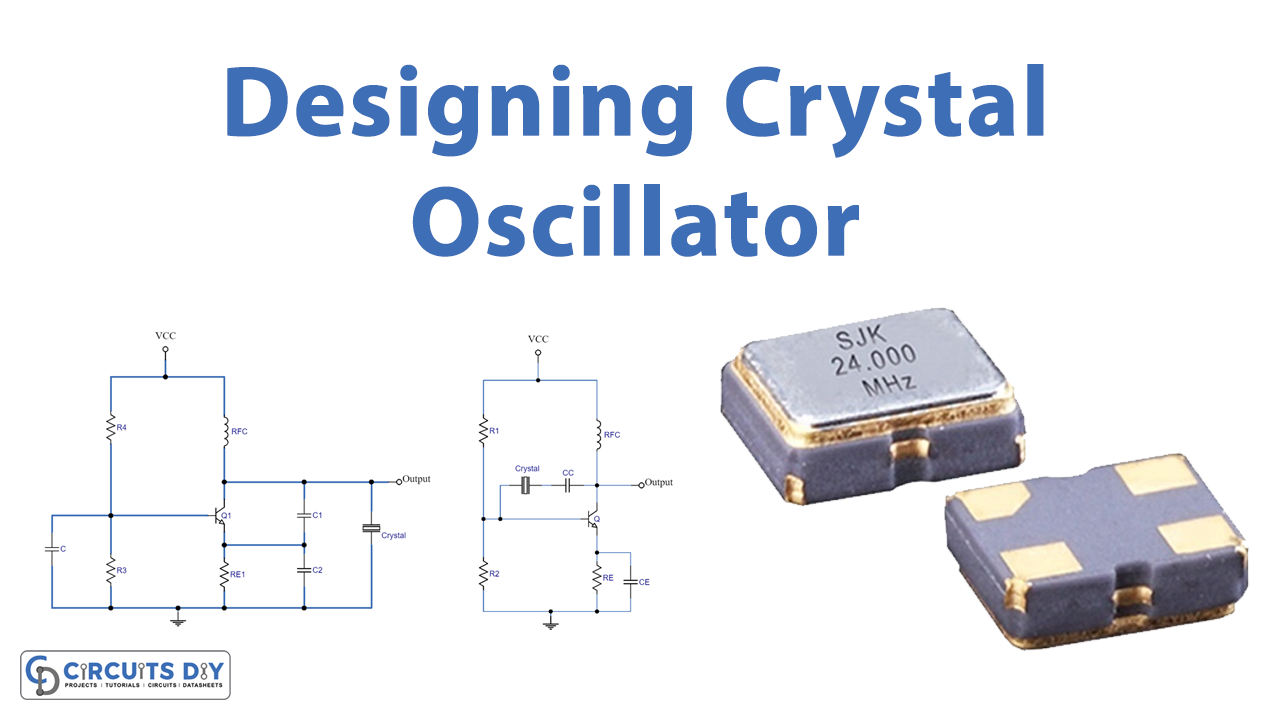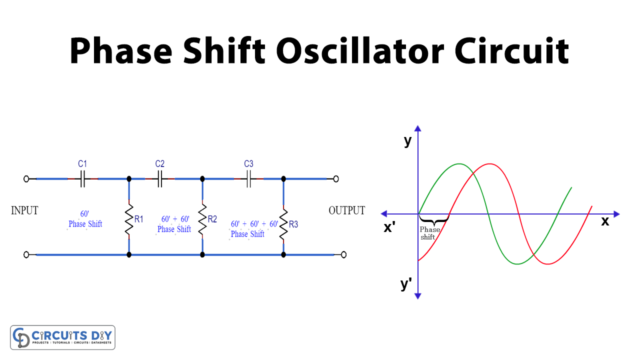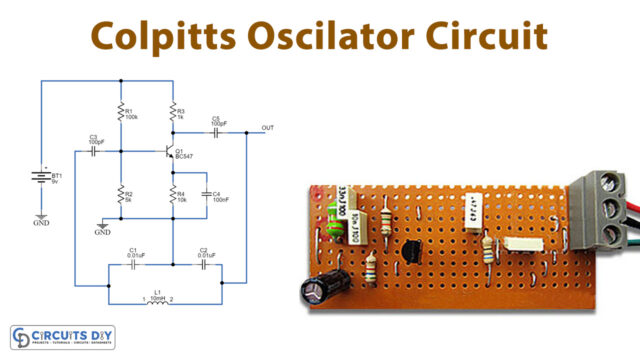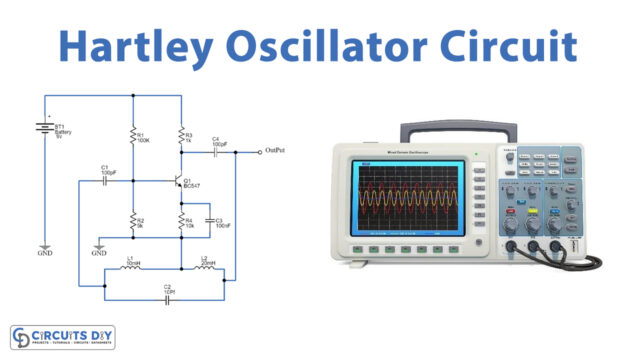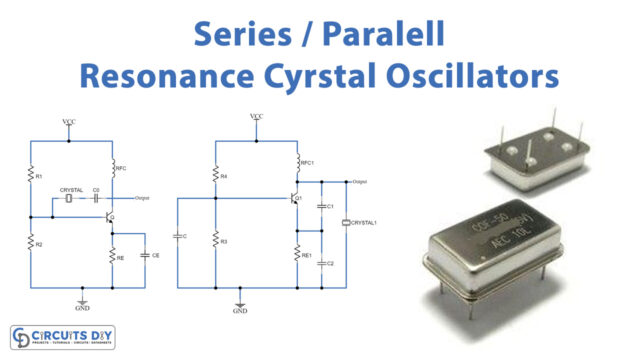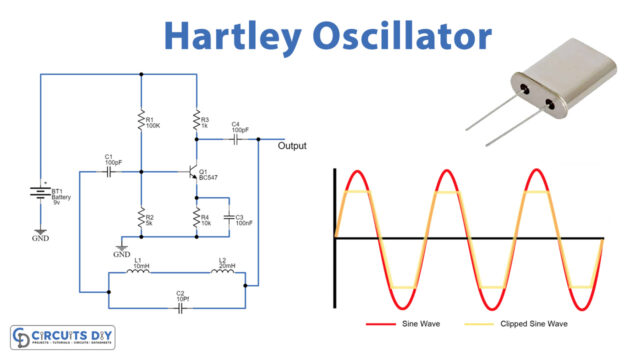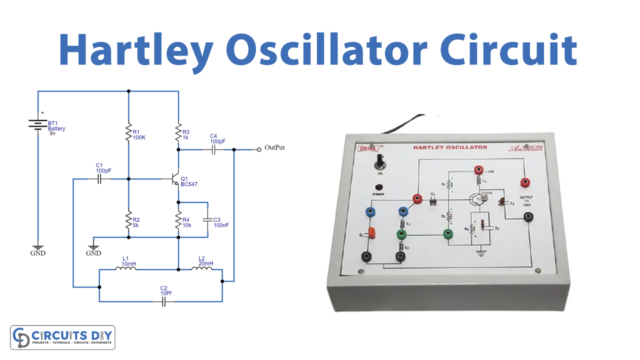This article will help you to design a crystal oscillator circuit and understand its operation.
A crystal oscillator circuit is an electronic circuit board, that produces a specific frequency. It also works with a vibrating crystal’s mechanical resonance, to generate a consistent frequency. Generally, crystal oscillators are made from Quartz crystal and sometimes a mixture of other substances like Tourmaline and Rochelle salt. This Quartz crystal material produces a constant oscillation, at different temperature ranges. And it is naturally available, so Quartz crystal is inexpensive. In the crystal oscillator element quartz crystal is mounted between two metallic plates, and terminals are brought out from these plates.
Here when we apply energy to the crystal, it produces vibrations at a natural frequency. And when we apply vibration, it will produce a small amount of energy. This piezoelectric effect makes Quartz crystals a unique element. Crystal oscillator depends heavily on transposed piezoelectricity or electrostrictive, to function effectively. And the process happens, when you’ve alterations in a quartz crystal’s shape within an electric field. This effect will help us, to produce constant oscillations. Crystal oscillators are available in different frequency ranges and different sizes.
Crystal Equivalent Circuit

The output frequency of oscillator circuits is normally not as stable as required for applications. The component values all have tolerances, so that the actual oscillating frequency may easily be 10% higher or lower than the desired frequency. Here this equivalent circuit contains two segments, one is to represent the friction and stiffness of quartz crystal and another one is to represent the parallel capacitance of plates. The series RLC circuit has Low valued resistor Rs, a large valued inductor Ls and a small valued capacitor Cs, and also a parallel capacitor Cp. As we know that quartz crystal is a transducer, as it can convert one type of energy into another energy. Here normal crystal oscillator symbol and its equivalent circuit are given.
Series and Parallel Resonance
Due to the presence of Cp, the crystal will resonate at two different frequencies (series resonance oscillator or parallel resonance oscillator). To obtain a specific frequency from oscillators, we need to calculate the resonant external component’s value.
- Series resonant frequency fs, which occurs when the series capacitance CS resonates with the series inductance LS. At this stage, the crystal impedance will be the least, and hence the amount of feedback will be the largest. Mathematical expression for the same is given as

- Parallel resonant frequency fp is exhibited, when the reactance of the LSCS leg equals the reactance of the parallel capacitor Cp i.e. Here LS and CS resonate with Cp. At this instant, the crystal impedance will be the highest, and thus the feedback will be the least. Mathematically it can be given as

Crystal Oscillator Circuit Diagram

Construction
As we can see in order to make the series resonance crystal oscillator, first place the crystal element and coupling capacitor between the collector and base terminals of the common emitter configured circuit. And then we can obtain the oscillator output from the collector terminal.
In order to make a parallel resonance crystal oscillator, the crystal element is placed across the collector and emitter terminal. And the output is taken from the collector terminal, here the transistor is configured as a common emitter.
As we know, a specific range of crystal components is connected with digital ICs. Most microcontrollers and microprocessors are available with an external terminal, to connect crystal elements. So there is no need for an external oscillator circuit. And the switching components can be a transistor of FET or MOSFET.
Application
Can be used in electronic watches, microcontrollers, microprocessors, and clock pulse-requiring circuits.

